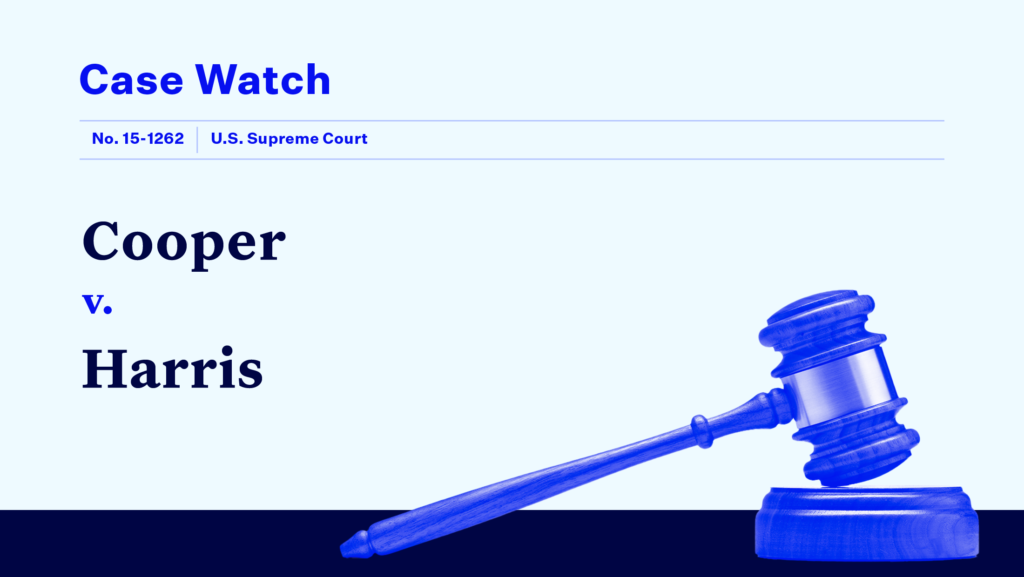The Decade-Long Fight Against Racial Gerrymandering

Sometimes, voting rights cases move quickly through the courts; other times they can take years. As legislators prepare to redraw maps in 2021 — and interested parties prepare to challenge these maps in court — let’s take a look back on one of the most influential cases that set the stage for litigating racial gerrymandering: Cooper v. Harris.
How did we get here?
Following the 2010 census, several southern states improperly claimed Section 5 of the Voting Rights Act (VRA) — the requirement that jurisdictions with a history of racial discrimination get permission from the federal government to enact any changes to their voting law — as an excuse to pack Black voters into districts to dilute their voting power across a state. One of those states was North Carolina, and in 2013, voters challenged the state’s 1st and 12th Congressional Districts as unconstitutional racial gerrymanders.
Historically, Black candidates in the 1st and 12th Congressional Districts “easily and repeatedly” won reelection in district maps that did not pack Black voters. But in 2010, legislators in charge of drawing new district maps hired Thomas Hofeller, a Republican strategist, to help with redistricting, who redesigned districts to create two packed majority-minority districts, decreasing the ability of Black voters to elect representatives of their choice across the state as a whole. It was this map that was challenged in the lawsuit.
In 2015, the case went to trial in front of a three-judge federal court. The plaintiffs argued that race was the predominant consideration for drawing both districts and thus the districts were improper racial gerrymanders — violating the 14th Amendment. A few months later, the panel agreed that both districts were unconstitutional and ordered the drawing of new congressional districts. The court found that “the legislature assigned race a priority over all other districting factors” and concluded that the Legislature “packed” Black voters into these districts despite the fact that this was not necessary for North Carolina to do in order to comply with the VRA.
North Carolina appealed the decision to the U.S. Supreme Court, which affirmed the district court’s decision and again ordered the Legislature to adopt a new map. Writing for the majority, Justice Elena Kagan said “by no means…will we approve a racial gerrymander whose necessity is supported by no evidence and whose raison d’être is a legal mistake.”
What’s at stake?
While Cooper v. Harris was a resounding success for fighting racial gerrymandering, the story of North Carolina’s 1st and 12th Congressional Districts continued after the Supreme Court decision. After being ordered to redraw the state’s congressional map, Republican legislators adopted and implemented rules that explicitly required the new map to preserve North Carolina’s existing partisan balance of 10 Republican to three Democratic congressional seats.
Republicans made their intentions clear. During the redistricting process after the Supreme Court’s ruling, Republican state Rep. Dave Lewis said, “I propose that we draw the maps to give a partisan advantage to 10 Republicans and three Democrats, because I do not believe it’s possible to draw a map with 11 Republicans and two Democrats.” This led to another round of litigation challenging the North Carolina congressional map, this time based on claims of unconstitutional partisan gerrymandering.
Cooper v. Harris, and the extensive litigation that followed it, exemplifies the duality of federal gerrymandering lawsuits: racial and partisan gerrymandering. The courts have treated these types of cases very differently. In 2019 alone the Supreme Court ruled on a racial gerrymandering case (Virginia House of Delegates v. Bethune-Hill) and then ruled that partisan gerrymandering claims are not justiciable (suitable for courts to decide on) in Rucho v. Common Cause — a lawsuit based on the same North Carolina congressional map that was drawn after Cooper.
As we head into another redistricting cycle, it is important to look back on past redistricting cases, no matter what type of gerrymandering they challenge. For, no matter the claims, lawsuits challenging the most basic structure of our political system can last a decade.